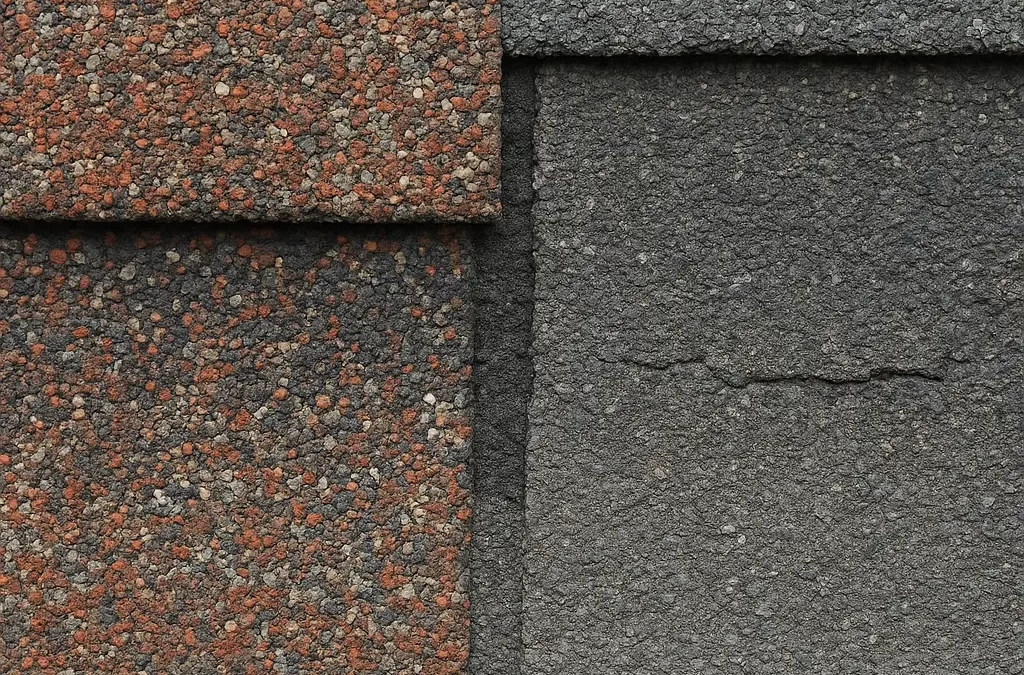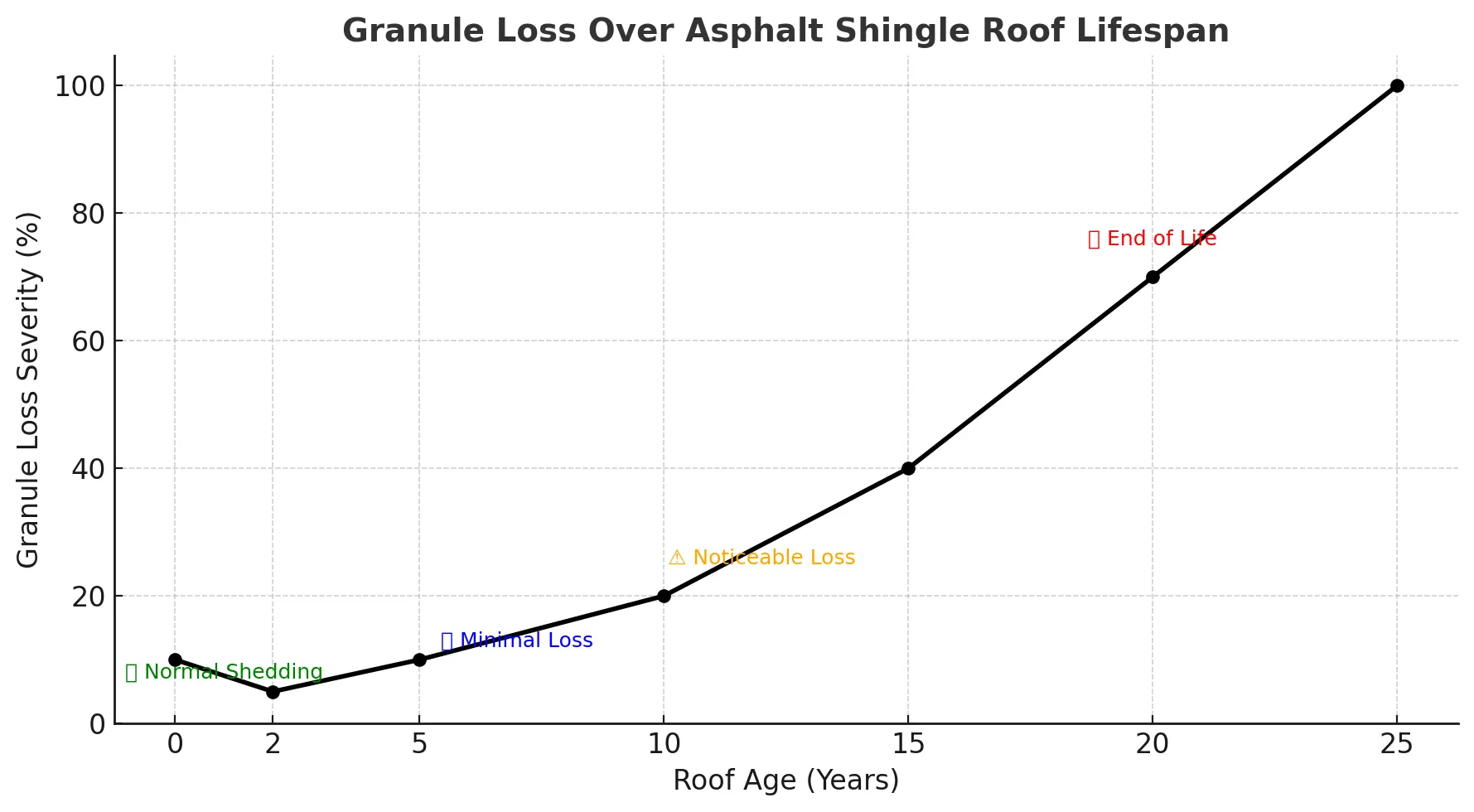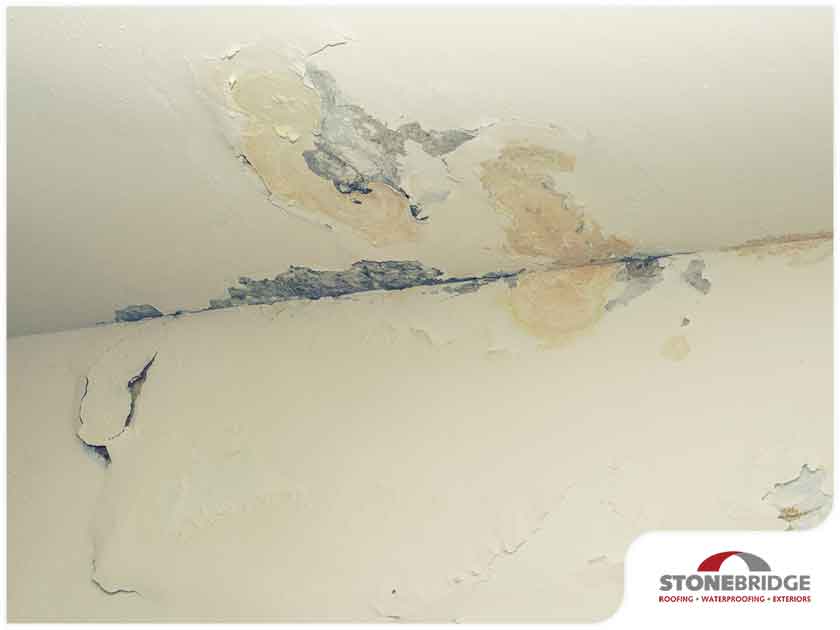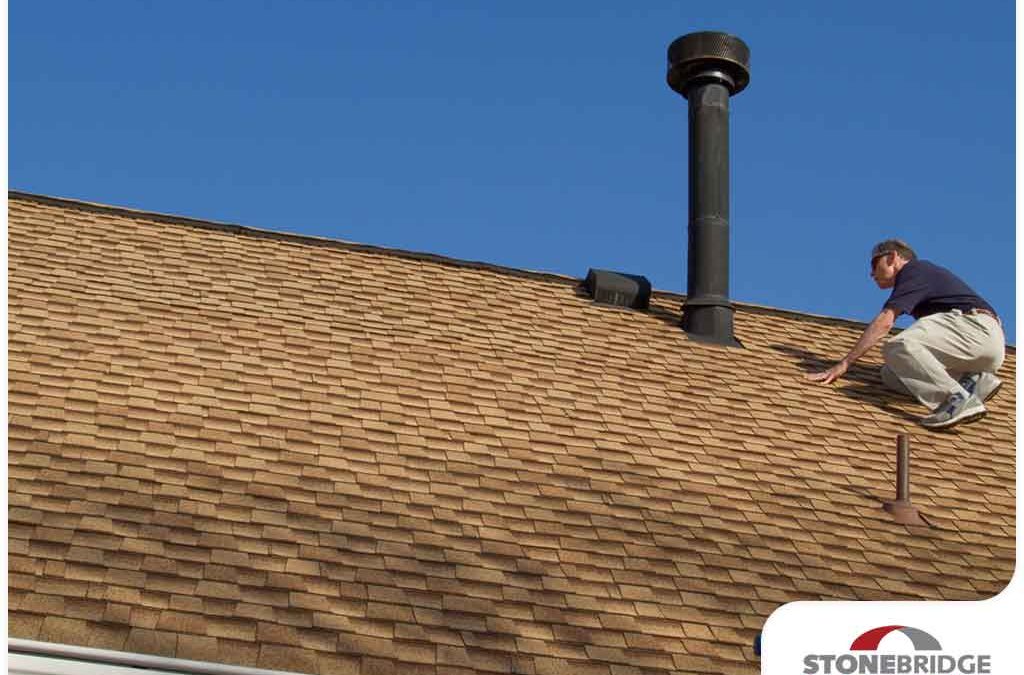
Granule Loss and Heavy Rain: What Homeowners Should Know
Granule Loss and Heavy Rain: What Homeowners Should Know
Your roof is the shield of your home. It keeps out the sun, the wind, and the rain. But even the strongest shield can wear down over time. One of the clearest signs of roof wear is granule loss on asphalt shingles. Granules are the small, rough particles that cover each shingle. They may look simple, but they do important work. Granules protect the shingle’s asphalt layer from the sun, help water run off, and even add fire resistance. When they start to fall away, your roof becomes more open to damage. This is especially true when heavy rain is on the way.
Why Granules Matter in a Storm
Granules are like armor for your roof. Without them, the asphalt underneath is exposed. Rainwater can hit directly on the bare asphalt, which absorbs moisture instead of shedding it. Over time, this makes shingles weaker, more brittle, and more likely to crack.
During heavy rain, the problem gets worse. Rain can:
- Wash away loose granules. Aging or storm-worn shingles may lose granules faster in downpours.
- Expose bare spots. Areas with missing granules soak in more water, speeding up wear.
- Cause leaks. Without granules, shingles don’t shed water as well, so it can pool or sneak under the roof.
If your roof is already showing signs of wear, one strong rainstorm can push it closer to failure.
How Rain Speeds Up Granule Loss
A little granule loss is normal, especially when a roof is brand new. But heavy rain puts extra stress on shingles. Here’s how:
- Gutters fill up fast. After a storm, check your gutters. If you see piles of dark sand-like particles, those are roof granules. A few is fine. A lot means the shingles are breaking down.
- Wind and water together. Rain is often paired with strong winds. Wind lifts at the edges of shingles, while rain pounds from above, knocking more granules loose.
- Repeat cycles. One storm may not ruin a roof, but storm after storm strips more granules away. Once enough are gone, shingles lose their protective layer and age quickly.
Roof Age and Storm Risk
Granule loss becomes more serious as a roof gets older:
- 0–2 years: Light shedding is normal after install. Heavy rain won’t hurt much.
- 5–10 years: Most roofs still have good protection, but strong storms may leave more granules in gutters.
- 10–15 years: Granule loss speeds up. Storms can create bald spots and expose asphalt.
- 15–25 years: Roofs at this stage often show major wear. Heavy rain makes leaks far more likely.
If your roof is over 10 years old, it’s smart to be extra watchful during storm season.
The Importance of Roof Inspections
This is where roof inspections play a key role. Many homeowners don’t notice granule loss until water is already leaking inside. By then, repairs can be costly. A professional inspection before or after a storm can reveal:
- Bald spots or shiny asphalt showing on shingles
- Granules building up in gutters and downspouts
- Soft spots or water stains in the attic
- Storm damage that may not be visible from the ground
Regular inspections give peace of mind and let you catch problems before they grow.
When to Call Roofing Companies
If you see lots of granules in gutters after a rainstorm, or if your roof is over 10 years old, call local roofing companies for help. They can check if your roof is still safe or if repairs or replacement are needed. The right company will have experience in your area and know how local storms affect roofs. They’ll also be able to tell you whether the damage is from normal aging, or if it qualifies for insurance coverage due to storm impact. Stonebridge offers Free Roof Inspections to help you discover issues early before they become big problems.
Protect Your Home Before the Next Storm
Granule loss may seem small, but when heavy rain hits, it becomes a bigger threat. Missing granules mean less protection, higher chances of leaks, and a roof that ages faster than it should.
Don’t wait until water drips into your home. Keep an eye on your gutters, watch for bald spots on shingles, and schedule regular roof inspections. Trusted roofing companies can help you get ahead of problems before the next storm rolls in. Contact us for a free roof inspection now.



